METEORA (Day 6 - part 1)
After a lovely hotel breakfast, we loaded up into the bus and headed into the hills. The Greek word Meteora means "suspended in the air."
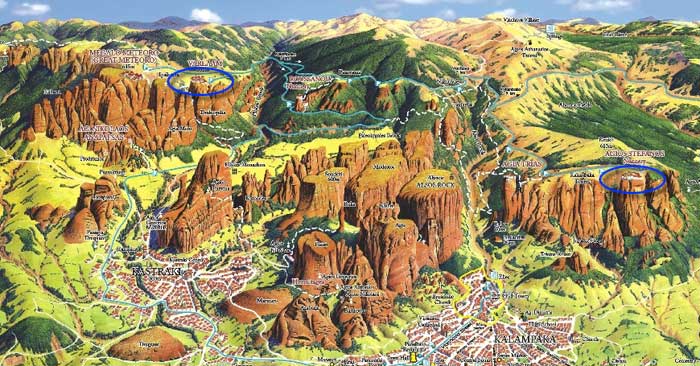
A map of the area. We were going to visit the Monastery of St. Stephen (right circle) and then the Monastery of Varlaam (left).
People began living in the many small caves in this area some 50,000 years ago. In the 11th century, monks also began using them as a place to worship. Some monks, intent on living the life of a hermit, dwelled among the tops of the pinnacles. Eventually, the creation of one church led to the first monastic communities. From 1356 to 1372, the Great Meteoron monastery was built... for the faithful who wanted to reach the skies. Access was only by means of removable ladders or large nets. This isolation and control helped keep their religion and culture alive during the Ottoman Turk occupation (1453 - 1829). But eventually the community gradually began to decline.
Of the 24 monasteries, only 6 are still functioning today, while the rest lay largely in ruin. The total monastic population is around 65, with some 15 monks in four monasteries and 40 nuns in two monasteries.
Monastery of Great Meteoron (built 1356, largest)
Monastery of Varlaam (1517, second largest)
Monastery of Rousanou/St. Barbara (1545, nuns)
Monastery of St. Nicholas Anapafsas
Monastery of St. Stephen (1400, nuns)
Monastery of the Holy Trinity (or Agia Triada, 1475)
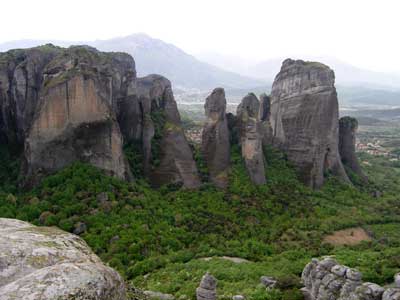
The unusual rock columns are not volcanic. Rather they are a mixture of stone, sand and mud from streams that once flowed into a delta at the edge of a lake. About 60 million years ago, the seabed was pushed upwards, creating a high plateau with many vertical fault lines. Weathering by water, wind and temperature has created the shapes we see today. The tallest one is just over 2,000 feet.
We stopped to get some amazing views of the area. The road we were on was built in 1968.
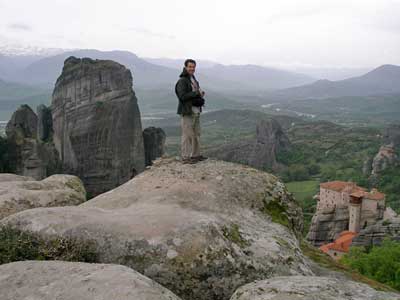
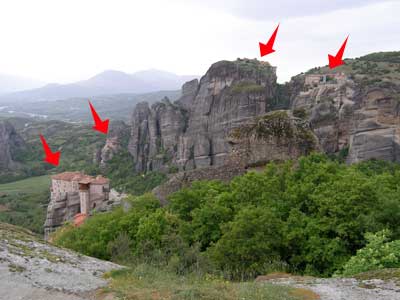
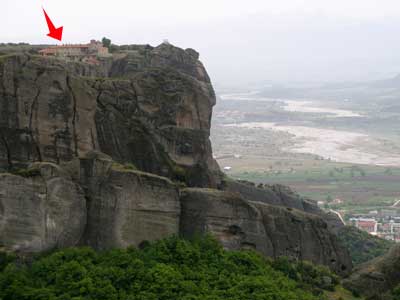
From left to right: 1- Rousanou, 2 - St. Nicholas, 3 - Great Meteoron, 4 - Varlaam... and 5 - St. Stephen
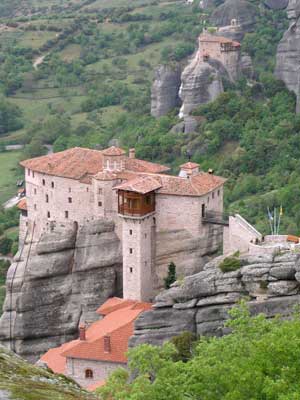
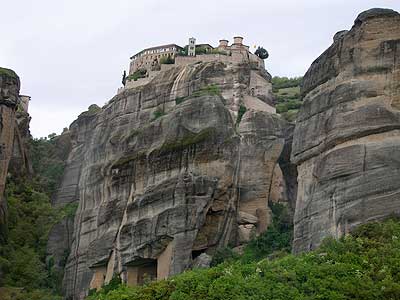
Closer views of Rousanou and St. Nicholas... and Varlaam
Our first stop was the Monastery of St. Stephen (Agiou Stefanou), currently a working convent and home to about 30 nuns. It was built in 1400 by St. Antoninus Cantacuzene, a son of Serb ruler. Fortunately it was a lot easier to get to than in the old days since the road led almost right to the door.
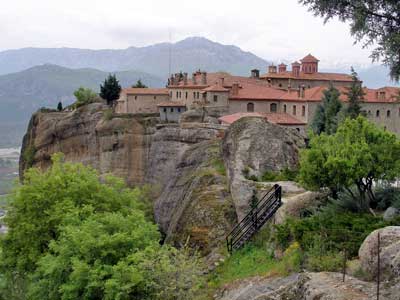

St. Stephen
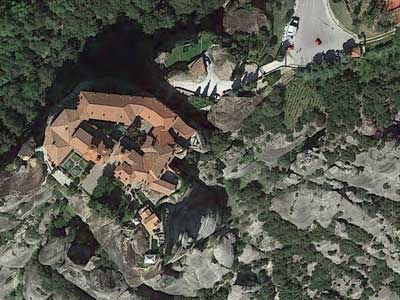
A satellite photo showing the monastery and the road
Originally, women were not allowed in any of the monasteries. In 1921, Queen Marie of Romania became the first woman ever allowed to enter one. St. Stephen's was converted to a nunnery in 1961 after it had been virtually abandoned for many years. Today 'we' are allowed in but were asked to wear a skirt wrap.
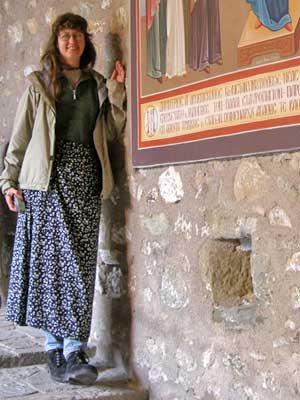

Me with my lovely wrap
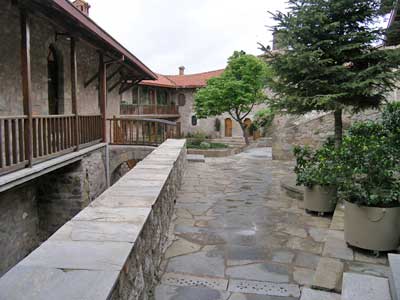
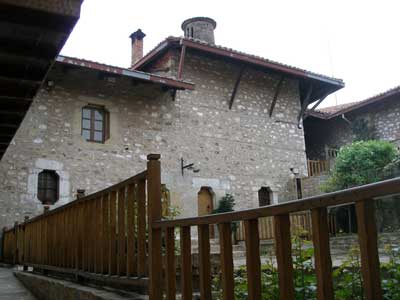
The nuns spend 8 hours per day in prayer, 8 hours working (assisting visitors, making icons, tending the fields, cleaning) and 8 hours sleeping, mediating and reading scripts.
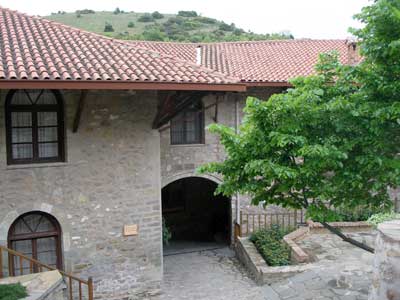
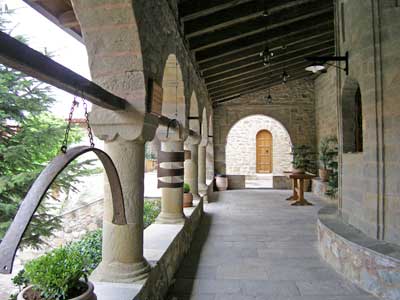
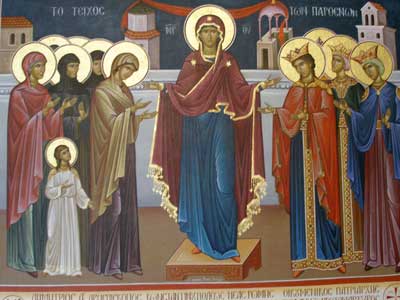
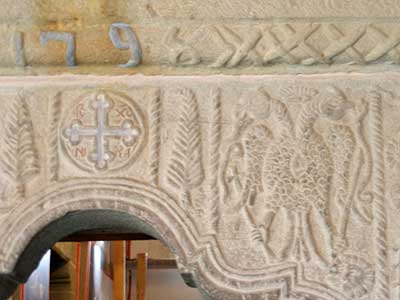
Mary brings blessings (the nuns stand in the back wearing all black)... and symbolic eagles
The double-headed eagle is a common image in many countries. Originating in the Middle East, it was the official state symbol of the Byzantine Empire. It symbolized the unity as well as the separation between the Orthodox church and the state in a Christian society.The two heads also represented the dual sovereignty of Rome (left, the West) and Constantinople (right, the East).
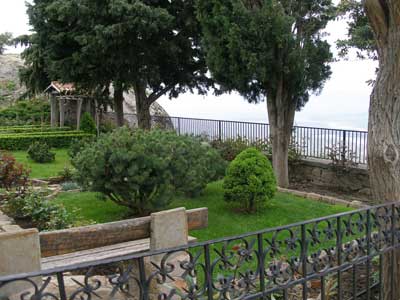
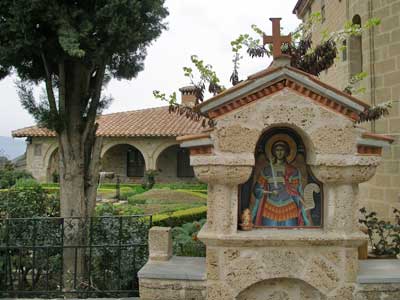
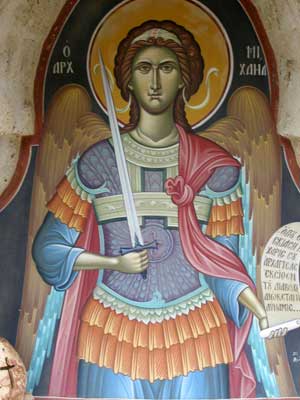
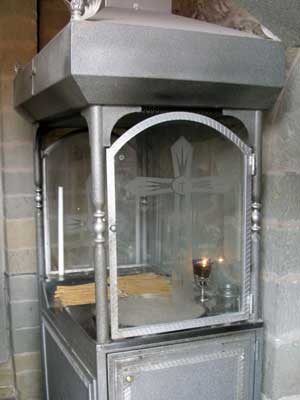
The Archangel Michael... and a small shrine
We made our way to the the Monastery of Varlaam.
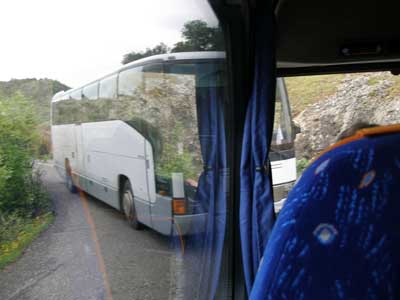
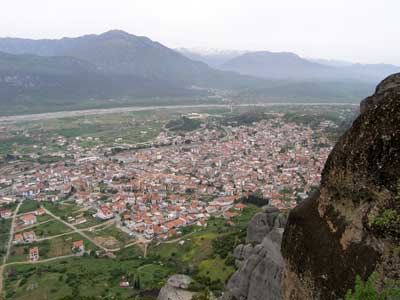
The narrow twisty streets provided some difficulty for the giant busses.... A great view of Kalambaka
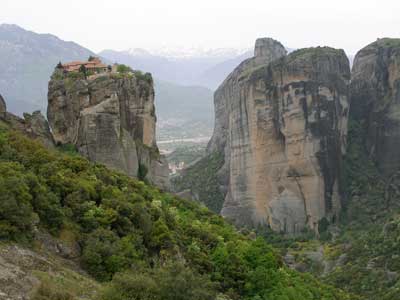
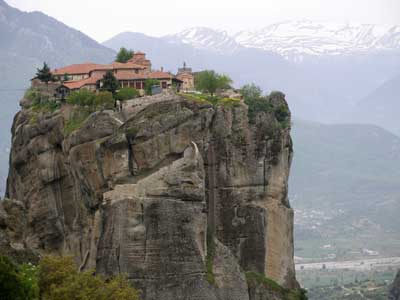
Monastery of the Holy Trinity
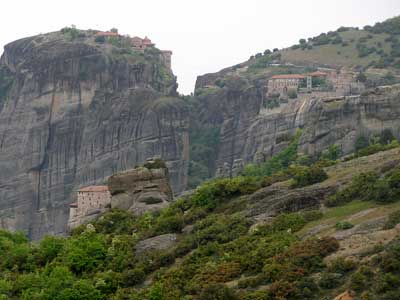
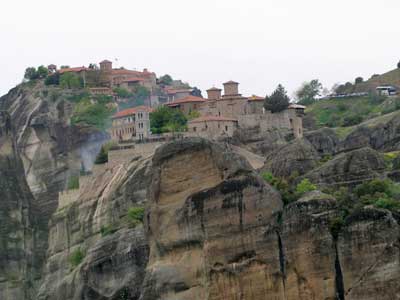
St. Nicholas (lowest), Great Meteoron (left) and Varlaam (right)... and a closer view of Great Meteoron (back) and Varlaam (front)
Varlaam (or Barlaam) is named after Hosios Varlaam, the monk who first built three churches here in 1350. After his death, the site was abandoned until 1517 when two monk brothers, Theophanes & Nektarios Apsarades, rebuilt the monastery and added a tower. It took 22 years to haul all the building materials up by ropes, pulleys and baskets... and only 20 days to complete construction. The first steps were carved in 1923. In its heyday, the monastery housed 35 monks. Now there are only around 7.
Today, a road ends fairly close to the structure. A bridge and some stairs then lead to the top. Again I was given another skirt wrap.
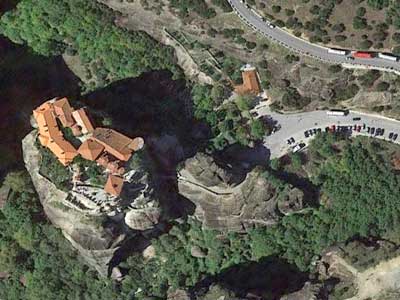

A satellite image... and a view of the monastery with its hoisting tower
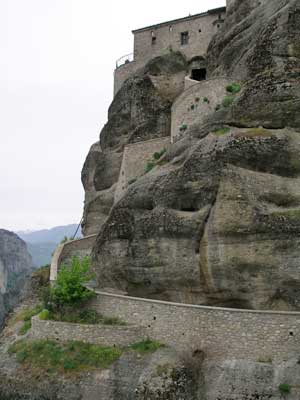
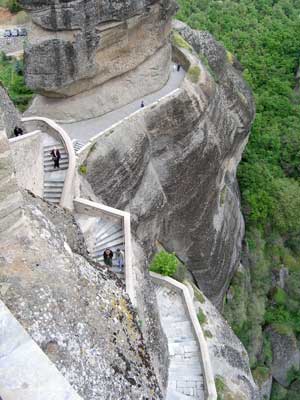
The stairs
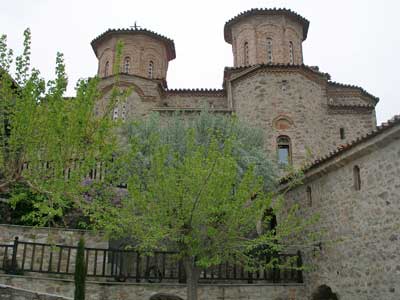
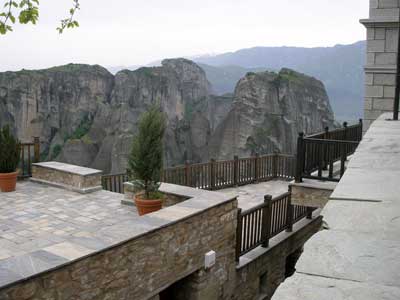
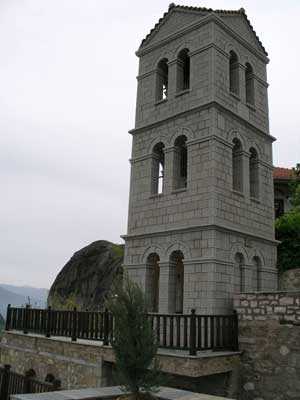
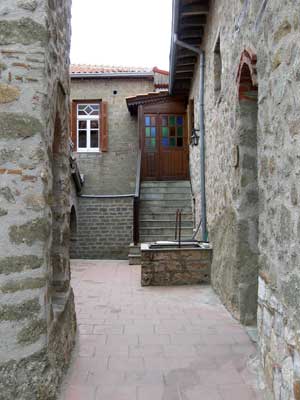
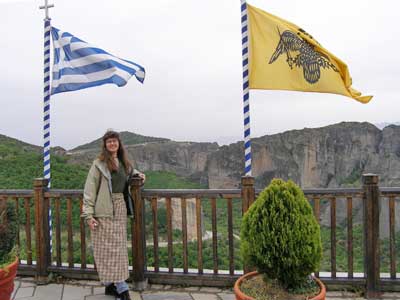
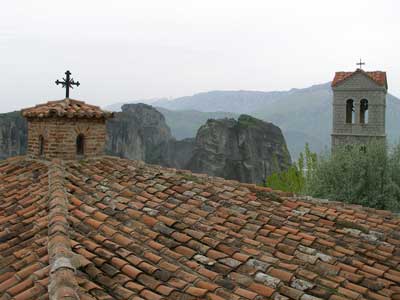
The state flag (left) and the church flag with the double-headed eagle (right)
The flag has nine blue and white stripes which are symbols of the Greek phrase "Freedom or death." The cross in corner is for Eastern Orthodox Christianity.
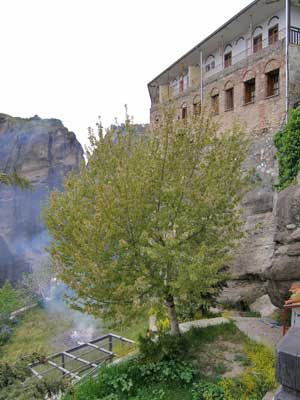
Burning some trash
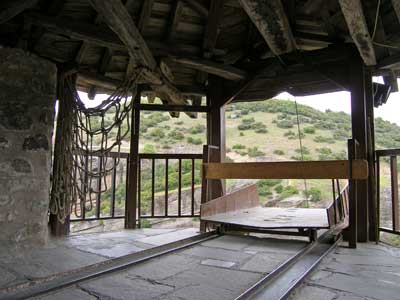
The hoisting tower, with a giant net and a metal cart on tracks
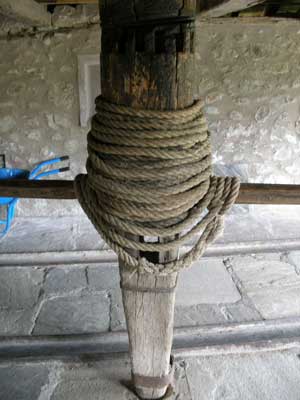
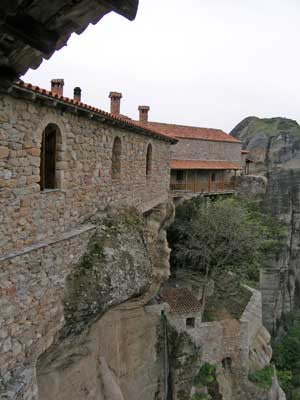
This is the old windlass (or hoisting winch) that was used in the 1500's. Everything today is mechanical. When asked how often the rope used to be replaced, the monks appaerently like to comment "Only when it broke!"
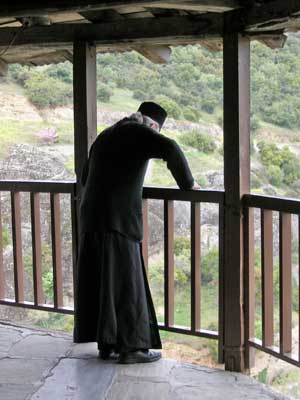
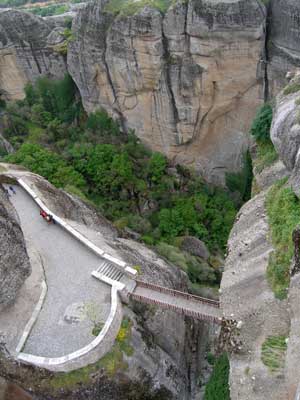
This monk was very unhappy about something! ... A view of the entrance bridge far below
return • continue

